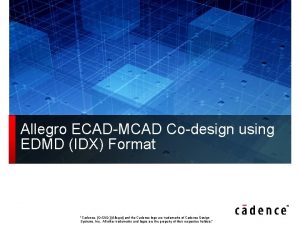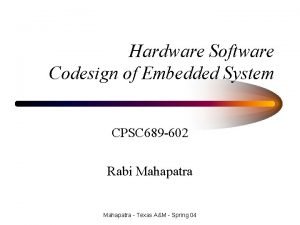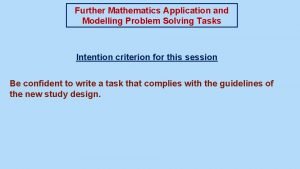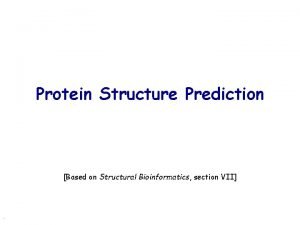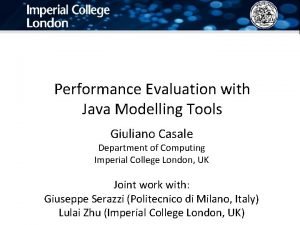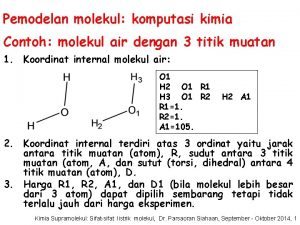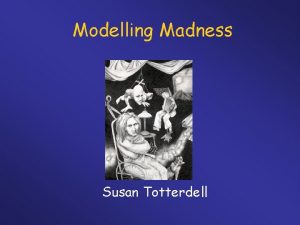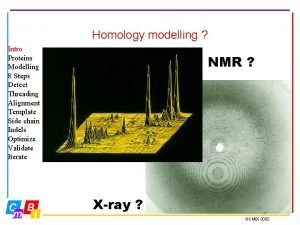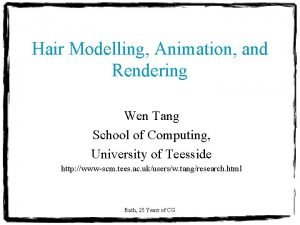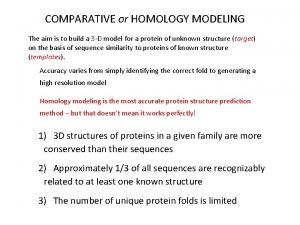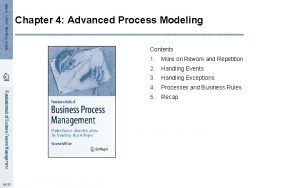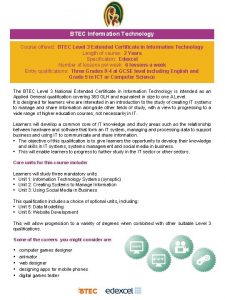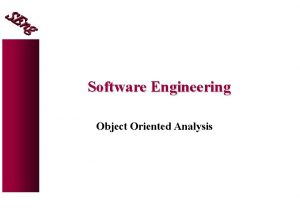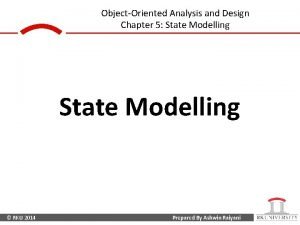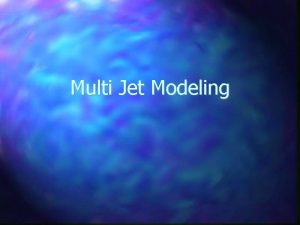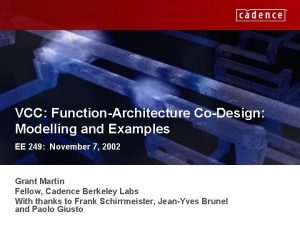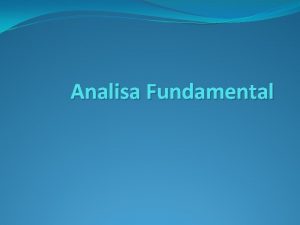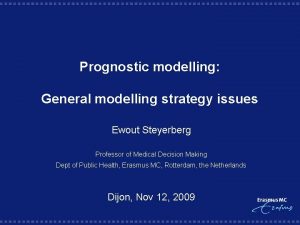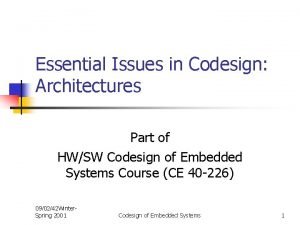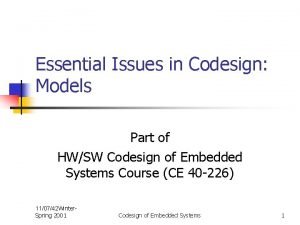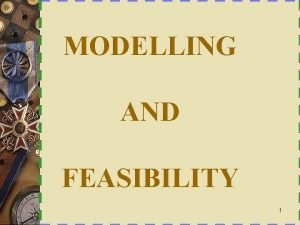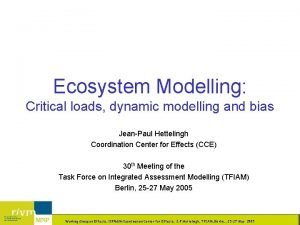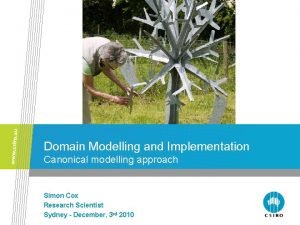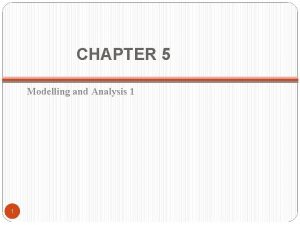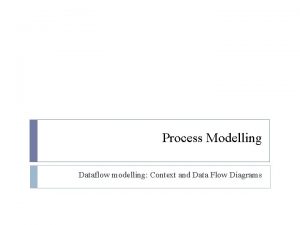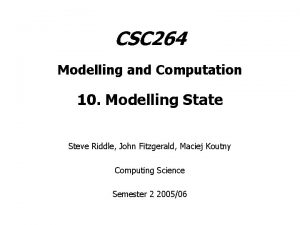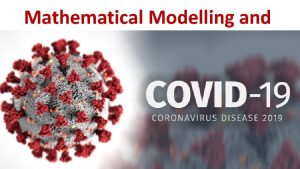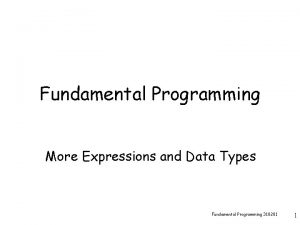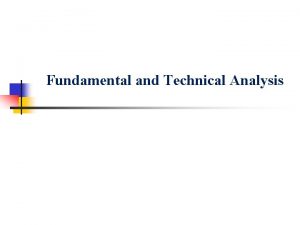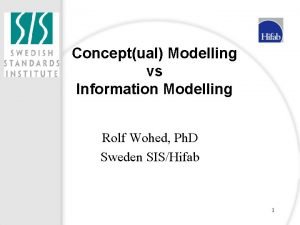HW SW CODESIGN AND PROGRAM MODELLING Fundamental issues

























- Slides: 25

H/W , S/W CO-DESIGN AND PROGRAM MODELLING • Fundamental issues in h/w s/w codesign: Selecting the model: models are used for capturing and describing the system characteristics • Consisting of objects and composition rules. • Most often the designers switch between a variety of models from the requirements specification to the implementation aspect of the system design(bcoz objective varies with each phase)

• Selecting the architecture: specifies how a system is going to implement in terms of the number and types of different components and the interconnection among them( CISC, RISC, SIMD, MIMD etc) • Controller arch implements the finite state machine model • Data path arch is best for data flow graph model where o/p is generated as a result of a set of predefined computations on the input data • It may contain registers, couters, memories and ports

• Finite state machine data path combines controller arch with data path. It implements a controller (control inputs) with data path(processes the data) • Complex instruction set computing CISC : can perform large complex operation • Use of single complex instruction reduces the program memory access and program memory size requirement

• RISC is designed to operate on registers • RISC arch supports extensive pipelining • VLIW very long instruction word implements multiple functional units (ALU, multipliers etc) in data path. • Parallel processing arch implements multiple concurrent processing elements PE and each may associate a data path containing register and local memory (eg. SIMD, MIMD)

• Selecting the language : language captures a computational model and maps it into architecture • No hard and fast rule to specify the language • Language should capture the model easily • Partitioning system requirements into h/w and s/w : it may be possible to implements the system requirement s in either h/w or s/w

COMPUTATIONAL MODELS IN EMBEDDED DESIGN • Data flow graph/ diagram DFG model: translates the data processing requirements into a data flow graph • Emphasis on the data and operations on data • Data represented using a circle and data flow is represented using arrows • Inward arrow to the process( circle) is i/p data and outward arrow from the process (circle) is o/p data

Control data flow graph/diagram (CDFG) • DFG -Executing is controlled by data and doesn’t involve any control operations (conditionals) • Used for modelling application involving conditional program execution • Contains both data operations and control operations • Contains both data flow nodes and decision nodes where as DFG contains only data flow nodes

State machine model • Used for reactive or event-driven e. s whose behavior are dependent on state transitions. • Model describes the system with ‘states’, ‘events’, ‘actions’, and ‘transitions’ • State- representation of current situation • Event- i/p to the state • Transitions- movement from one state to another • Action- activity to be performed by the state m/c • An FSM is one in which the no of states are finite • Eg: automatic seat belt warning system • 1. when the vehicle ignition is on and the seat belt is not fastened within 10 sec , the system generates an alarm for 5 sec • 2. the alarm is turned off when the alarm time expires or if the driver fastens the belt if the ignition switch is turned off , whichever happens first

FSM model for automatic seat belt warning system

FSM model for timer

FSM model for automatic tea/coffee vending machine

FSM model for coin operated telephone system

Sequential program model • Functions or processing requirements are executed in sequence • Program instructions are iterated executed conditionally and the data gets transformed through a series of operations • FSM s are good choice • Another tool used for modeling is flow charts • Flow chart models the execution flow • Eg. Seat belt warning system

Flowchart approach for modeling the ‘seatbelt warning’ system explained in the FSM modelling section #define ON 1 #define OFF 0 #define YES 1 #define NO 0 Void seat_belt_warn() { Wait_10 sec(); If (check_ignition_key()==ON) { If (check_seat_belt()==OFF) { Set_timer(5); Start_alarm(); While ((check_seat_belt()==OFF) & (check_ignition_key()==OFF) &&(timer_expire()== NO)); Stop alarm(): } } }

Concurrent/communicating process model • Models concurrently executing tasks/processes • Sequential execution leads to a single sequential execution of task and thereby leads to poor processor utilization, when task involves i/o waiting, sleeping • Can split the task into multiple subtasks and switch between them • This requires additional overheads in task scheduling, task synchronization and communication • Eg; seat belt warning system • 1. timer task for waiting for 10 sec • 2. for checking the ignition key status • 3. for checking the seat belt status • 4. for starting and stopping the alarm • 5. alarm timer task for waiting 5 sec • Can not execute these 5 randomly or sequentially. Need to synchronize their execution

Object oriented model • It disseminates a complex s/w into simple pieces called objects. • Re-usability, maintainability and productivity • Object is characterized by a set of unique behavior and state • Class is an abstract description of a set of objects • State by variable and behavior by functions • Characteristics of object oriented model

Unified modeling language UML • Is visual modeling language for object oriented design • Set of unique diagrams are used for capturing, designing and deployment • UML building blocks: ‘things’ ‘relationships’ and ‘diagrams’ are fundamental building blocks • 1. Things: • Structural: represents the static parts of UML model. class, interface , use case component etc

• Class: a template describing a set of objects identifier variable methods • Interface: collection of externally visible operations which specify a service of a class • Use case: a set of sequence of actions name

• Component: physical packaging of classes and interfaces Name • Node: a computational resource exising at run time • Behavioral: represents mostly dynamic parts of a UML model. Interaction, activity etc • Interaction: set of objects exchanging messages for a specific purpose

• State machine : behavior specifying the sequence of states in response to events name • Grouping: a package and subsystems • Package: organises elements in to packages. It is only a conceptual thing • Annotational : explanatory parts • Note: explanatory element contains formal informal explanatory text

• 2. Relationships: they express the type of the relationship between UML elements. • Association: link between objects • Aggregation: represents a part of relationship • Composition: • Aggregation with strong ownership relation t represent the component of a complex object • Generalisation: represents a parent child relationship child • parent

• Dependency: represents the relationship in which one element uses or depends on another element • ----- • Realization: relationship between two elements in which one element realizes the behavior specified by the other element • • element 1 element 2

• 3. UML diagrams: gives a picotrial representation of the satic aspects behavioral aspects , organisation and management of different modules (class, package) of the system • Static diagram: representing static aspects of the system Eg: Class diagram, object diagram, package diagram • Behavioral diagram: representing dynamic aspects of the system Eg: use case diagram , sequence diagram, state diagram Use case diagram used for capturing system functionality as seen by users Sequence diagram is a type of interaction diagram representation object interaction with respect to time


 Ecad mcad codesign
Ecad mcad codesign Hardware software codesign in embedded systems
Hardware software codesign in embedded systems Wire frame modeling advantages
Wire frame modeling advantages Trendlines and regression analysis
Trendlines and regression analysis Problem solving and modelling task
Problem solving and modelling task Technological modelling
Technological modelling Energy based model
Energy based model Jsimgraph
Jsimgraph Molecular modelling laboratory
Molecular modelling laboratory Modelling madness
Modelling madness Models of interaction in hci
Models of interaction in hci Lbo case study
Lbo case study Homology modelling steps
Homology modelling steps Hair modelling
Hair modelling Embedded systems product development
Embedded systems product development Homology modelling steps
Homology modelling steps Advanced process modeling
Advanced process modeling Mechanical system modeling examples
Mechanical system modeling examples Modeling rich interaction in hci
Modeling rich interaction in hci Unit 5 data modelling assignment 2
Unit 5 data modelling assignment 2 Graphical modelling tool for structured analysis
Graphical modelling tool for structured analysis Algorithmic cost modelling
Algorithmic cost modelling Class responsibility collaborator modelling
Class responsibility collaborator modelling State modelling
State modelling Contoh object oriented model
Contoh object oriented model Multijet modeling
Multijet modeling
